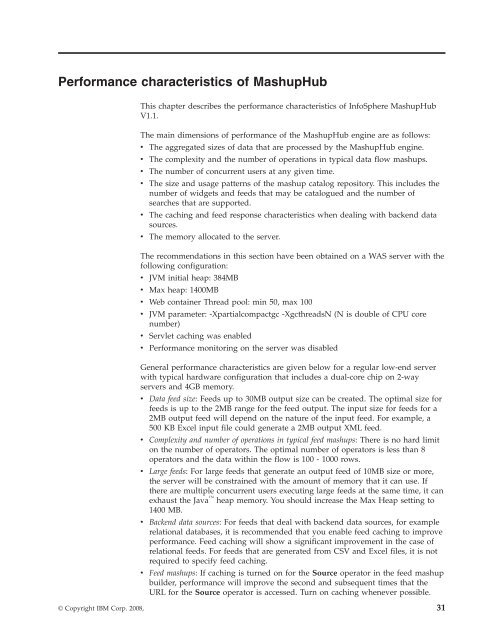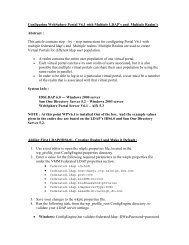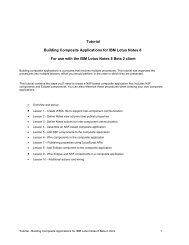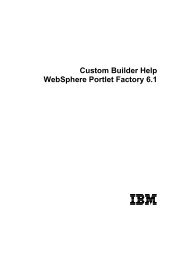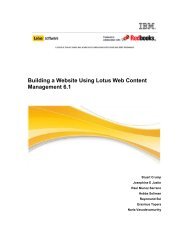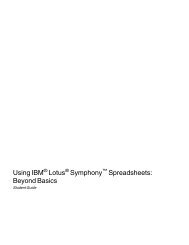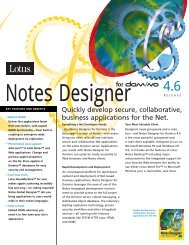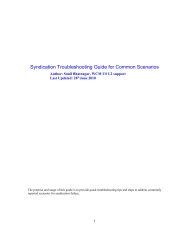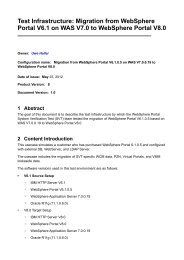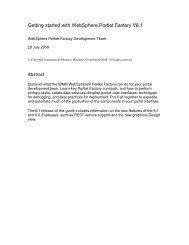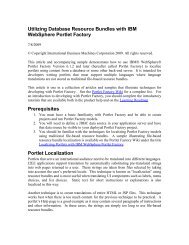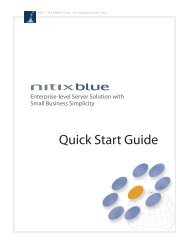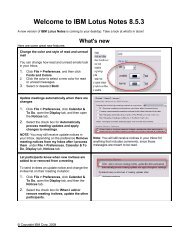Create successful ePaper yourself
Turn your PDF publications into a flip-book with our unique Google optimized e-Paper software.
Performance characteristics of <strong>Mashup</strong>HubThis chapter describes the performance characteristics of InfoSphere <strong>Mashup</strong>Hub<strong>V1.1</strong>.The main dimensions of performance of the <strong>Mashup</strong>Hub engine are as follows:v The aggregated sizes of data that are processed by the <strong>Mashup</strong>Hub engine.v The complexity and the number of operations in typical data flow mashups.v The number of concurrent users at any given time.v The size and usage patterns of the mashup catalog repository. This includes thenumber of widgets and feeds that may be catalogued and the number ofsearches that are supported.v The caching and feed response characteristics when dealing with backend datasources.v The memory allocated to the server.The recommendations in this section have been obtained on a WAS server with thefollowing configuration:v JVM initial heap: 384MBv Max heap: 1400MBv Web container Thread pool: min 50, max 100v JVM parameter: -Xpartialcompactgc -XgcthreadsN (N is double of CPU corenumber)v Servlet caching was enabledv Performance monitoring on the server was disabledGeneral performance characteristics are given below for a regular low-end serverwith typical hardware configuration that includes a dual-core chip on 2-wayservers and 4GB memory.v Data feed size: Feeds up to 30MB output size can be created. The optimal size forfeeds is up to the 2MB range for the feed output. The input size for feeds for a2MB output feed will depend on the nature of the input feed. For example, a500 KB Excel input file could generate a 2MB output XML feed.v Complexity and number of operations in typical feed mashups: There is no hard limiton the number of operators. The optimal number of operators is less than 8operators and the data within the flow is 100 - 1000 rows.v Large feeds: For large feeds that generate an output feed of 10MB size or more,the server will be constrained with the amount of memory that it can use. Ifthere are multiple concurrent users executing large feeds at the same time, it canexhaust the Java heap memory. You should increase the Max Heap setting to1400 MB.v Backend data sources: For feeds that deal with backend data sources, for examplerelational databases, it is recommended that you enable feed caching to improveperformance. Feed caching will show a significant improvement in the case ofrelational feeds. For feeds that are generated from CSV and Excel files, it is notrequired to specify feed caching.v Feed mashups: If caching is turned on for the Source operator in the feed mashupbuilder, performance will improve the second and subsequent times that theURL for the Source operator is accessed. Turn on caching whenever possible.© Copyright <strong>IBM</strong> Corp. 2008, 31


